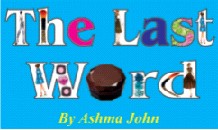
The hashtag hair oiling has garnered an astonishing 35.7 million views across social platforms like TikTok and has somewhat resulted in many commercial brands capitalising on the “trend” that has long held cultural significance for Indians.
Now seeing it as part of the clean girl aesthetic, brought back fond memories of growing up and hearing my mom tell us to “soak your heads in coconut oil” and of course the funny faces you would get if you dared to enter shared spaces with strangers having obeyed her.
The practice is rooted in Ayurvedic medicine, an over 5,000 years science grounded in the holistic balance of the body. According to Aruna Purohit, an Ayurvedic doctor attached to Kama Ayurveda, our scalps hold 31 “energy-relieving points called marmas which help to drain, cool and relieve pressure when stimulated as it is here that the veins and nerves intersect.
It’s not hard to understand then why head massages feel so good and even sometimes put us to sleep.
These ancient beauty rituals aren’t only healthy for hair growth and shine but provide nurturing moments. It was and still is usually grandmothers or mothers who did the oiling for the younger ones.
It is now, too, a reminder that centuries-old traditions could have only survived because they brought results. Oiling is a time consuming business and while I have seen the benefits, regrettably, I opted for more store-bought hair masks hoping that they would do the trick. They haven’t. As I rebuild my oiling routine and get reacquainted with the do’s and don’ts I wanted to share the basics.
Detangling
Hair is most fragile when wet and while it may seem easier to detangle in the shower as it’s drenched with conditioner this increases hair loss. The hair is more elastic when wet and because the strands contain hydrogen bonds they break easily. Before oiling, detangle your hair dry starting from the bottom going up.
Carrier oils
There are so many well-packaged options in glossy bottles to choose from and if you are like me you probably get easily convinced when testimonials accompany them in a viral video. Whatever oils you may choose, however, ensure that they are free from fragrance and cold pressed. Some essential oils like Rosemary are extremely potent and some are too thick to be used alone, like Black Castor oil for example and as such require mixing with carrier oils like Jojoba or coconut. Remember to do a patch test on your hand for safety.
Cling wrap
It is not enough to soak the head with oil and go about your day. I find hair oiling is most effective when the hair is protected with a shower cap or even better with cling wrap like leftovers in the fridge. This allows the heat to be trapped and fosters better conditioning.
Like everything else, consistency is key and while this lengthy process (ideally the oil should stay in for at least three hours) may be deemed a hassle, the proof really is in the hair and well the hair of the millions frantically boarding the hair oiling train that has been journeying through generations for centuries.





